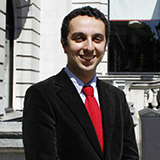Current healthcare pressures and a recent watershed medicolegal case have contributed to an uncomfortable climate for doctors and medical students. Reflective practice is under scrutiny, litigation is rife. Certainty and control, basic drivers for both patients and practitioners, are threatened as previously secure knowledge of disease trajectories and professional expectations change. Medical students are contending with the legacy of junior doctor strikes, rising debts, and insecurity around the safety of reflection in mandated portfolios. As a clinical academic (FG) and a final year medical student (MZ) at a London medical school, we hear student narratives resonating with those of patients; of uncertainty and trepidation about the future. Students voice concerns that if they err, medical schools may not protect them, mirrored by a perception that as doctors, nor may our governing bodies. Consequently, like our patients, we may find ourselves seeking boundaries and reassurances within an unpredictable professional landscape.
Medical students have long grappled with liminality; the ambiguity of status and role that arise during a medical apprenticeship. The rites of passage and associated thresholds can result in medical students struggling with knowing where they belong. Some report a dissonance in reconciling the positions of medical student and future doctor. This bridging of identities is captured in a liminal “between state” where one is no longer the same person as at the start, but has yet to reach the end, graphically likened by one student as being sharply shaped into topiary (Hill, 2008).
As medical educators, we have traditionally focused on the hard science of medicine, concentrating on the techne and praxis aspects (skills and knowledge), placing less emphasis on the phronetic, humanistic components. Within undergraduate medical education we have concentrated on scientific attainment which is simpler to assess than the “softer” skills contributing to the artistry of medicine. To date, there has been little focus on self-criticality and reflection. Feedback highlights that students often consider reflective practice to be artificial or tokenistic, with the Bawa-Garba case inducing additional concerns about the safety and security of written reflection.
At our medical school we offer opportunities for students to engage with Balint Groups and Schwartz Rounds, both confidential reflective practice fora for discussing the emotional impact of clinical work. Participants report that certain patients stir emotions connected to family members or self. FG refers to these as “Trigger Patients,” as they trigger strong emotional responses. Many student discussions revolve around the paradox of being viewed as pseudo-medical professionals by patients, whilst yet perceiving themselves as lay people. Some patients make students feel like work experience school pupils, others treat them with deference that students consider misplaced. Some patients seek approval or guidance from them, contrasting with the disinterest shown by others, including clinician teachers. Students oscillate between feeling confident and competent versus not, reflecting the liminal space that they inhabit.
While our data show that some students value reflective opportunities, others do not. This may reflect a culture driven by assessment and competition. However, by giving medical students meaningful reflective spaces and the prerequisite emotional skills, we wonder if these may contribute to career longevity and satisfaction. Open reflection can foster camaraderie and reduce isolation, with the caveat that it may also unmask difficult and unpalatable feelings. The challenge for medical educators may be to shift the paradigm of dominant focus on academic attainment towards a healthier goal of producing well-rounded and emotionally-literate doctors, with good quality reflection being one tool to facilitate this.
Perhaps it is unsurprising that there is a growing literature of doctors’ memoirs candidly chronicling experiences of witnessing suffering and mistakes, which some may view as airing of the profession’s “dirty secrets” and may regard as heretical. Medical students too are emboldened, no longer content to passively absorb knowledge, evolving into partners co-creating agency in their education. In an age of growing public involvement in the professions, medical curricula are beginning to reflect the political agendas of widening participation and flattening of power hierarchies.
The levels of medical student distress appear to be prevalent and rising. As with patient care, we need to adopt a holistic view of medical education and treat our future doctors with the respect and kindness that we are expected to demonstrate to patients. Meaningful reflective practice requires its champions, and needs to be accessible and useful to tomorrow’s doctors. Role modelling, both good and bad, is a powerful pedagogical tool. Role modelling of vulnerability and emotion by senior clinicians should not be viewed as a weakness and rather should be respected for the profound impact it can have on the next generation. By instilling good reflective habits for professional practice and (hopefully) longevity, we may equip future colleagues with skills to navigate the complexity and ambiguity that frequently arise in clinical practice.
Hill A (2008). Reflections of a Pruned Medical Student. Published in The Inner World of Medical Students, J Shapiro, 2009. Radcliffe Publishing
 Faye Gishen, consultant physician and academic lead for clinical and professional practice, University College London Medical School
Faye Gishen, consultant physician and academic lead for clinical and professional practice, University College London Medical School
Competing interests: None declared.
 Michael Zervos studied medicine at University College London. He began an Academic Foundation Programme at Torbay Hospital in August 2018.
Michael Zervos studied medicine at University College London. He began an Academic Foundation Programme at Torbay Hospital in August 2018.
Competing interests: None declared.
